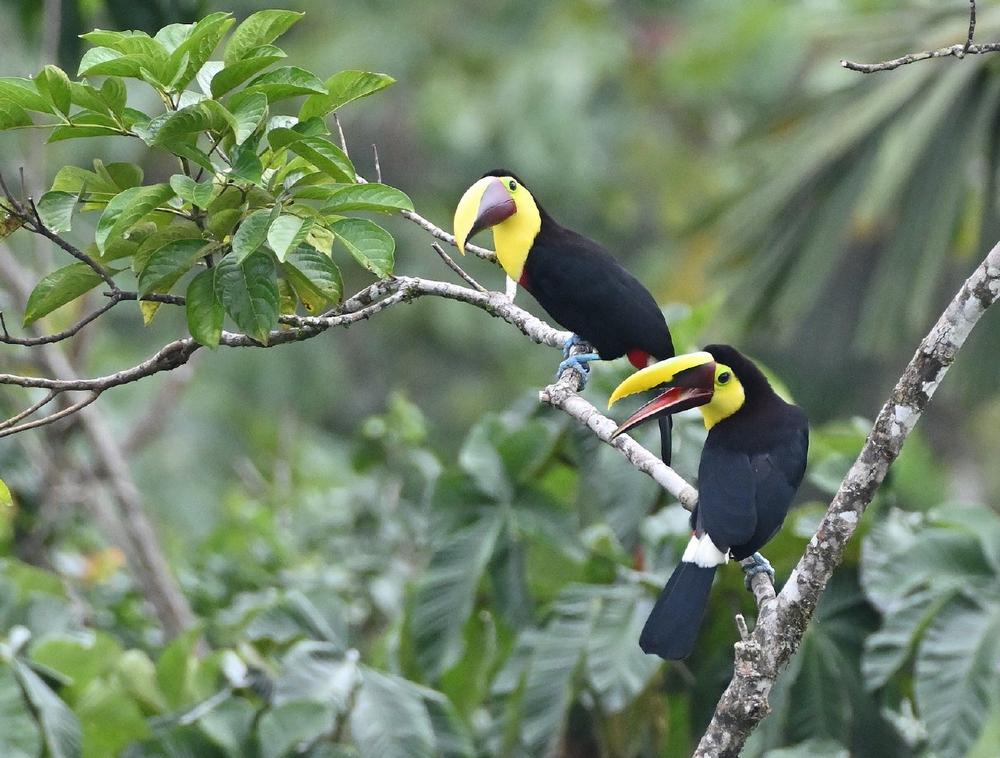Natural recovery of tropical forests needs time

Breaking News:
Mittwoch, Dez. 24, 2025

Rainforests are irreplaceable hotspots of biodiversity and are considered the “green lungs of the Earth”. However, the area of pristine tropical forests continues to decrease due to deforestation. The restoration of tropical forests is therefore crucial for biodiversity conservation and climate protection. As most tropical plants depend on animals for seed dispersal, these plant-animal interactions play an indispensable role in the natural regeneration of forests. But how long does it take for these natural processes to recover?
To address this question, the DFG research unit REASSEMBLY has investigated 62 sites at different stages of regeneration in the Ecuadorian Chocó rainforest – from agricultural areas such as cocoa plantations to young secondary woods and undisturbed natural forests. As part of this project, a research team led by Senckenberg scientist Anna Landim analyzed which animals disperse seeds from fleshy-fruited plants and how the functional diversity of these interactions is changing. The results indicate that the animals responsible for the dispersal of seeds – especially larger species such as toucans or mammals – need decades to return.
“Our study shows that it takes around 20 years for the interactions between plants and animals to return to the level of functional diversity found in undisturbed forests,” explains Anna Landim, the study’s first author and a doctoral student at the Senckenberg Biodiversity and Climate Research Center Frankfurt (SBiK-F). “The first to return are small birds that disperse small seeds. Toucans join them after about 10 years, at best. Larger mammals such as spider monkeys, which can also disperse large seeds, take even longer. Individual species with special habitat requirements, such as the long-wattled umbrellabird, are almost entirely restricted to undisturbed forests.”
A crucial factor for recovery is the proximity to surrounding forests. The better a regenerating forest patch is connected to other forests, the faster animals find their way back there and take on their role as seed dispersers. “In isolated forest islands, the important interactions between plants and animals only recover very slowly. In well-connected landscapes, this happens much faster,” explains co-author Eike Lena Neuschulz from the SBiK-F. The presence of individual old trees also plays an important role here.“ Such trees function like bridges in the landscape – they make it easier for animals to travel between forest fragments and spread seeds,” she adds.
The results clearly show that natural forest recovery takes time – more than the ten to fifteen years after which young forests are often clear-cut again in many regions. “If forests are logged too early, the crucial ecological processes do not recover,” says co-author Matthias Schleuning, also from the SBiK-F, and he adds, “Our study provides important information about measures that can be used to accelerate recovery, in particular maintaining individual old trees and better connectivity between forest areas. These measures can be costly – but they are crucial for the restoration of intact rainforests.”
Publication: Anna R. Landim, Jörg Albrecht, Jorge Brito, Santiago Burneo, Santiago Erazo, Felicity L. Newell, Boris A. Tinoco, Marco Tschapka, Eike Lena Neuschulz, Matthias Schleuning, Delayed recovery of seed-dispersal interactions after deforestation, Current Biology, 2025 https://doi.org/10.1016/j.cub.2025.08.070
The Senckenberg Gesellschaft für Naturforschung (Senckenberg Nature Society), a member institution of the Leibniz Association, has studied the “Earth System” on a global scale for over 200 years – in the past, in the present, and with predictions for the future. We conduct integrative “geobiodiversity research” with the goal of understanding nature with its infinite diversity, so we can preserve it for future generations and use it in a sustainable fashion. In addition, Senckenberg presents its research results in a variety of ways, first and foremost in its three natural history museums in Frankfurt, Görlitz, and Dresden.
The Senckenberg natural history museums are places of learning and wonder Page 3 of 3 and serve as open platforms for a democratic dialogue – inclusive, participative, and international. For additional information, visit www.senckenberg.de.
Senckenberg – Leibniz Institution for Biodiversity and Earth System Research // Senckenberg Gesellschaft für Naturforschung
Senckenberganlage 25
60325 Frankfurt
Telefon: +49 (69) 7542-0
Telefax: +49 (69) 746238
http://www.senckenberg.de
![]()